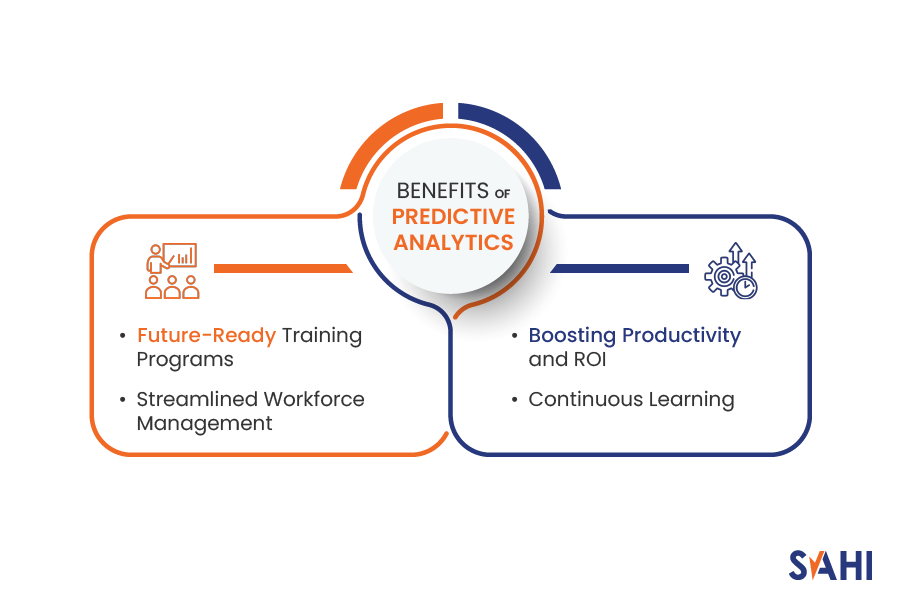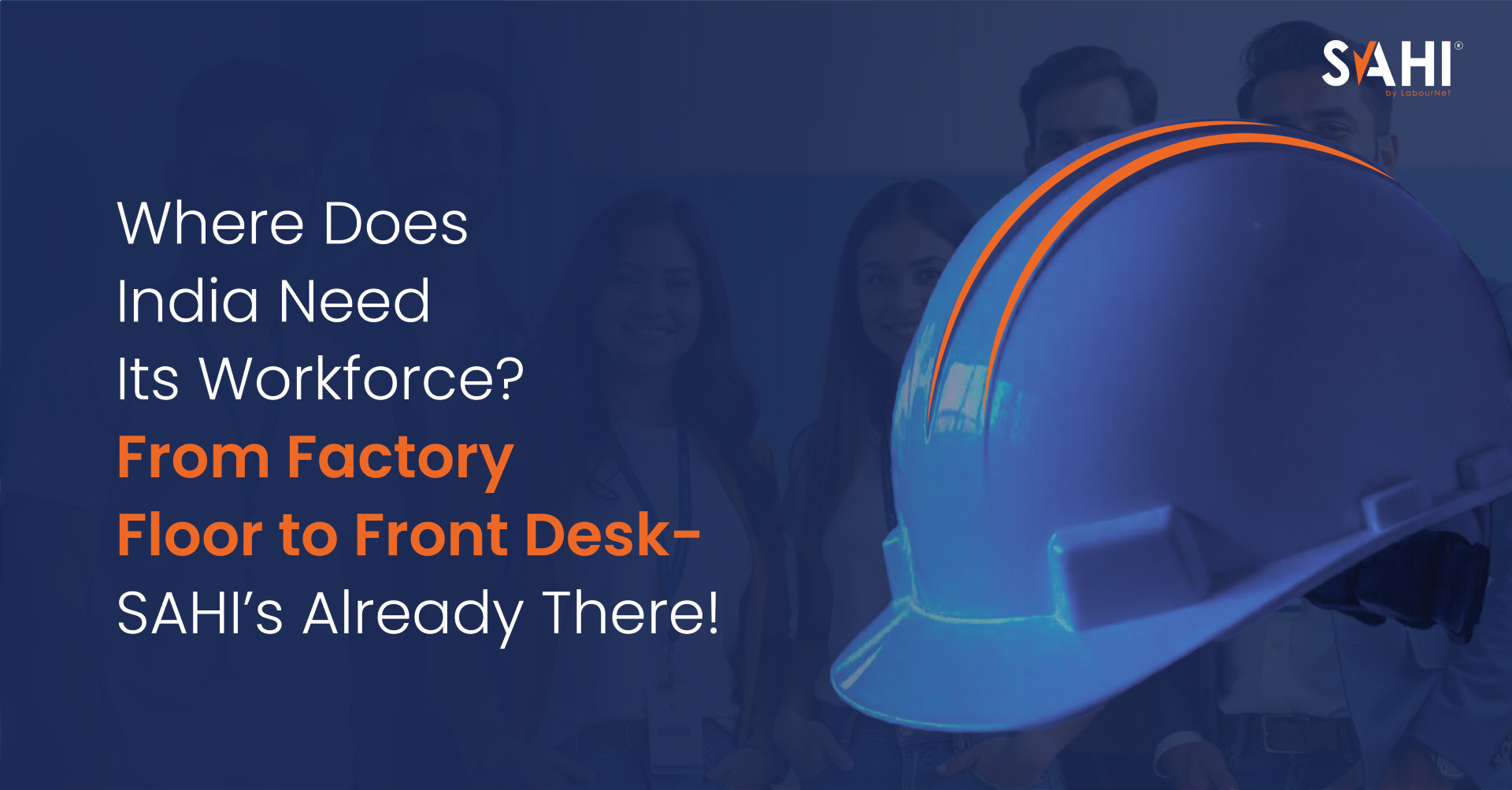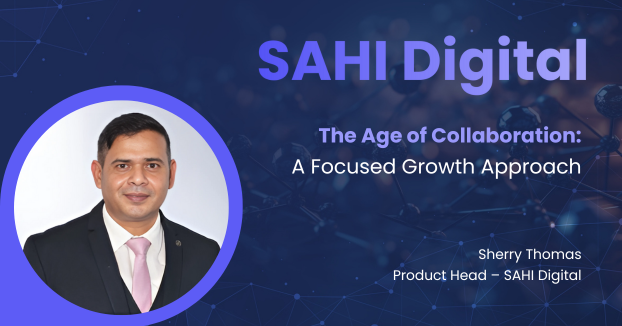In the throes of the Fourth Industrial Revolution, the manufacturing sector stands on the cusp of a transformative era. Technological advancements across industries, like advanced analytics, automation, and others are reshaping the landscape of production.
As a result, the skill sets required to navigate this new terrain are changing as well.
Learning and Development Heads are at the forefront of this seismic shift. They are tasked with the monumental challenge of equipping a blue-collar workforce with the competencies to thrive in this fast-evolving environment.
This is where the emergence of predictive skill analytics has heralded a new dawn for skills assessment tests. It enables a data-driven and strategic pathway to workforce upskilling and reskilling.
Yet, there remains a gap in adoption, with many organisations still clinging to antiquated practices. As a result, it hinders their ability to proactively manage the skills evolution.
With the need for a resilient and adaptable workforce intensifying, it’s imperative to pivot towards innovative solutions that provide a clear trajectory for the future. This blog aims to illuminate the path forward, outlining how SAHI’s pioneering approach to predictive skill analytics can bridge the skills gap.
After reading this guide, you will have a better idea about enhancing the efficiency and agility of the manufacturing workforce.
The Limitations of Traditional Skill Assessments
In an era where the industrial environment is characterised by rapid technological advancements and shifting market demands, traditional skill assessments are increasingly proving to be inadequate.
For Learning & Development Heads, the primary challenge lies in these conventional methods’ static nature. They are more invested in assessing current competencies rather than forecasting future skill requirements.
The dynamic nature of the manufacturing sector now demands a more agile and forward-thinking approach to employee training and development.
- The Static Nature of Conventional Skills Assessment Tests
Traditional skills assessment tests have been the cornerstone of workforce management strategies for decades. They measure a worker’s proficiency based on established industry standards, providing a snapshot of present capabilities.
However, as manufacturing industries evolve, the skills once deemed sufficient are quickly becoming obsolete. This static approach fails to consider the velocity of change in technologies and processes, making it difficult for companies to stay ahead in employee training and development.
- Inadequate Projection for Workforce Upskilling and Reskilling
Reskilling workforce has become a buzzword, yet many organisations struggle to implement it effectively. The reason? Traditional skill assessments lack the predictive power to identify the skills that will be in demand in the future.
Without this foresight, workforce upskilling becomes a reactive process, leaving companies a step behind in the race towards innovation and efficiency.
- Misalignment with Payroll Agency Objectives
Another area where traditional assessments fall short is in aligning with the strategic goals of payroll agencies and human resources departments. Payroll agencies, tasked with optimising the cost of labour, need to anticipate the evolving skill sets to invest in the right areas of workforce development.
Traditional assessments provide limited insights, making it challenging to allocate resources effectively and demonstrate a strong return on investment in skills for the workforce.
- The Skills for Workforce: A Mismatch
The skills of the workforce today need to be versatile, adaptive, and continuously evolving. However, traditional assessments tend to pigeonhole employees into predefined roles, overlooking the importance of transferable and emergent skills.
This oversight can lead to a critical mismatch between the skills workers possess and those needed to drive the industry forward.
The Advent of Predictive Skill Analytics
The industrial landscape is not just changing, but it is being reshaped by the forces of innovation and globalisation. There is a greater demand for a workforce that is not only skilled but also adaptable to future shifts.
This is where predictive skill analytics steps in, revolutionising the domain of skills assessment and workforce management.
Understanding Predictive Skill Analytics
At its core, predictive skill analytics harnesses the power of data, statistical algorithms, and artificial intelligence. This helps to identify the probability of future outcomes based on historical data.
When applied to skill assessment, it becomes a formidable tool that can project the future needs of the workforce. As a result, organisations can prepare their employees for tomorrow’s challenges today.
Predictive Analytics in Workforce Management
In workforce management, predictive skill analytics translates into a strategic asset. It allows Learning and Development Heads to move beyond the limitations of traditional skills assessment tests, providing a dynamic approach to workforce upskilling.
By analysing trends and patterns within large datasets, predictive analytics can forecast which skills will be in high demand. Once you know that it’s easier to ensure the workforce’s skills are not just current, but also relevant for the future.
Transforming Employee Training and Development
The application of predictive skill analytics in employee training and development is a game-changer. Skills assessment becomes not just about evaluating current abilities but about anticipating the direction of technological and market changes.
This foresight enables targeted training programs that are designed not only to address present skill gaps but also to equip the workforce with the skills necessary for future advancements.
Predictive Skill Analytics: A Catalyst for Reskilling Workforce
The reskilling of the workforce is now more than a reactive measure—it’s a strategic imperative. Predictive skill analytics empowers organisations to identify which roles are at risk of becoming redundant and which skills are gaining prominence.
With this information, Learning and Development Heads can design reskilling initiatives that are proactive rather than reactive. This ensures a resilient workforce is capable of navigating the complexities of a rapidly evolving industry.
Aligning with Business Goals through Skills for the Workforce
Predictive skill analytics aligns perfectly with the objectives of payroll agencies and human resource departments. By offering insights into future skill requirements, it enables these entities to align their employee training and development strategies with long-term business goals.
Aligning the goals also results in optimising investments in human capital and ensuring a more substantial return on investment for skills development initiatives.
Charting the Future of Workforce Development
In the dynamic realm of manufacturing, SAHI stands out as a pioneer, embracing predictive skill analytics to redefine the standards of skills assessment and workforce management. SAHI’s approach transcends the conventional, offering a more precise, future-oriented strategy to navigate the complexities of industry evolution.
A Data-Driven Revolution
SAHI leverages the vast potential of predictive analytics by integrating it into the fabric of its skills assessment framework. This integration allows for a sophisticated analysis of labour market trends, internal workforce data, and broader industry shifts.
By harnessing this data, SAHI provides Learning and Development Heads with actionable insights, enabling them to align workforce upskilling strategies with future industry needs.
Refining Workforce Management with Predictive Insights
Through SAHI’s innovative solutions, workforce management becomes a nuanced and anticipatory exercise. The platform’s predictive capabilities allow for the identification of emerging skills gaps, offering a critical lead time for organisations to initiate employee training and development programs.
This proactive stance ensures that the workforce remains agile and prepared for impending technological shifts.
The Strategic Edge in Employee Training and Development
Employee training and development take on a new dimension with SAHI’s predictive skill analytics. Skills assessment tests are no longer just evaluative but are transformed into strategic tools that inform the design and implementation of custom training content.
The content is now tailored not only to address current competencies but also to proactively develop the skills forecasted to be vital in the near future.
Enhancing Skills for Workforce through Predictive Skill Assessments
SAHI’s approach to skills for workforce development encapsulates the essence of predictive skill analytics. By focusing on future-oriented skill assessments, SAHI ensures that the training programs they develop are not reactive but are designed to give employees a competitive edge.
The ROI of Skills Assessment: Measuring Success
Incorporating predictive skill analytics into skills assessment offers tangible benefits that go beyond the immediate upskilling of employees. It is a strategic move that contributes to the long-term resilience and competitiveness of the organisation.
SAHI’s methodology ensures that Learning and Development Heads can measure the return on investment (ROI) of their training initiatives. They have an opportunity to witness the direct impact on workforce agility and business preparedness.
JSW Upskilling Training Program: How Impactful is Predictive Skill Analysis?
Client Introduction
JSW Group is a conglomerate with a storied legacy in the manufacturing sector. It has been at the forefront of innovation across its interests in Steel, Energy, Infrastructure, Cement, Paints, Venture Capital, and Sports.
Known for delivering top-tier products and services, JSW has consistently shown a commitment to excellence and growth.
Problem Faced
The group identified a pivotal growth area: the upskilling of gig workers to integrate them into the mainstream workforce effectively. JSW recognized the need to align these workers with contemporary manufacturing methodologies and equip them with the expertise to leverage cutting-edge technology.
However, the challenge was not only skill development but the application of these skills in a rapidly advancing industrial environment.
Solution Provided by SAHI
SAHI stepped in with a robust solution tailored to JSW’s needs— a comprehensive upskilling program designed specifically for gig workers. This program leveraged SAHI’s skill assessments to identify future-oriented skills and knowledge gaps among workers, ensuring the training was not just reactive but proactive.
Recognition of Prior Learning (RPL) Program for JSW Associated Workers
The RPL program, a cornerstone of this initiative, evaluated the existing capabilities of JSW’s workers. By recognizing their current skill levels, SAHI could precisely tailor the upskilling process to bridge the gap between their present abilities and the future demands of the industry.
Job Roles Trained
With LabourNet’s collaboration, the program has successfully enhanced the skill sets of 603 employees across various roles. This includes distribution sales professionals, IHB fabricators, masons, contractors, and engineers.
The program’s predictive skill analytics foundation ensured that each training module was targeted, relevant, and aligned with future skills for the workforce.
Testimonial from JSW Team
“The Fabrication Training Centre, powered by JSW, has significantly uplifted our fabricators’ skill levels. The transition from conventional to modern fabrication methods has been seamless, thanks to the workforce upskilling to utilise the latest tools and techniques. Our collaboration with SAHI and LabourNet has propelled our operational efficiency and sustained our competitive edge in the marketplace.”
The Benefits of Predictive Analytics in Workforce Development

In the landscape of modern manufacturing, the integration of predictive analytics into workforce development is not just a luxury but a necessity. SAHI’s approach to predictive skill analytics paves the way for robust employee training and development programs that address both current and future needs.
The benefits are manifold, ranging from enhanced training programs to more efficient workforce planning and notably improved productivity.
- Crafting Future-Ready Training Programs
Predictive analytics empowers Learning and Development Heads to design training programs that are not merely reactive but proactive. By accurately forecasting the skills that will be in demand, training can be customised to prepare the workforce for upcoming changes and technological advancements.
This foresight ensures that skills development initiatives are strategic, targeted, and aligned with future industry landscapes. So, it helps in enhancing the overall effectiveness of workforce upskilling and reskilling.
- Streamlining Workforce Management
In the sphere of workforce management, predictive skill analytics serves as a linchpin for efficiency. By anticipating future skill requirements, organisations can plan their staffing needs more effectively.
This strategic planning allows for a seamless transition as industry demands evolve. You can ensure that the workforce is not just equipped for today’s tasks but is also adaptable to tomorrow’s challenges.
Payroll agencies and human resource departments, therefore, can operate with greater agility, aligning their strategies with predictive insights for optimised resource allocation.
- Boosting Productivity and ROI
The strategic application of predictive skill assessments directly correlates with enhanced productivity. A workforce trained in accordance with predictive analytics is a workforce that can operate at the forefront of industry standards.
This alignment not only improves individual performance but also drives overall organisational efficiency. Furthermore, the improved ROI on training and development initiatives is a significant benefit.
By investing in the right areas, companies can see a tangible return on their investment.
- Fostering a Culture of Continuous Learning
One of the subtler advantages of predictive analytics in workforce development is the promotion of a culture of continuous learning. When training programs are developed with a forward-thinking approach, employees are encouraged to engage in lifelong learning.
This cultural shift is vital in an industry where change is the only constant.
Predictive Skill Analytics – The Keystone for a Future-Proof Workforce
It’s evident that predictive skill analytics is far more than a fleeting trend—it is the bedrock upon which future-proof workforces are built. SAHI’s pioneering approach to workforce management through the strategic application of predictive skill analytics underscores its necessity in the current industrial revolution.
A Proactive Approach to Skills Development
SAHI’s predictive analytics has set a new precedent in the realm of skills assessment and workforce upskilling. It transforms the traditional reactive training model into a proactive, strategic process that ensures employee training and development align with forthcoming industry demands.
This shift is crucial in an era where skills can become obsolete as quickly as new technologies emerge.
Aligning Workforce Planning with Future Trends
The predictive insights provided by SAHI’s platform have revolutionised workforce planning. They enable Learning and Development Heads to anticipate and prepare for future trends, making workforce management a strategic function that contributes to the company’s agility and resilience.
Such an alignment is not just beneficial but essential for staying competitive in a rapidly evolving market.
Enhancing Productivity and Achieving a Tangible ROI
The implementation of predictive skill analytics is a direct investment in the workforce’s efficiency and productivity. It ensures that the skills for the workforce are continuously updated, keeping pace with industry advancements and driving business performance.
Moreover, this strategic approach to skills assessment and workforce development results in an enhanced return on investment, as training initiatives are directly linked to future needs and company growth.
Cementing a Culture of Continuous Improvement
Predictive skill analytics fosters an organisational culture steeped in continuous improvement and learning. It encourages a reskilling workforce mindset, where development is ongoing, and adaptability is ingrained.
Ready to Transform Your Workforce Development Strategy? Connect with SAHI
In the intricate dance of industry and innovation, staying ahead means not just keeping pace with current trends but strategically anticipating future shifts. SAHI’s predictive skill analytics offers you the foresight and tools to ensure your workforce is not merely current but future-ready.
Are you prepared to take your employee training and development to the next level?
SAHI is more than just a skilling agency; it’s your strategic partner in fostering a resilient, adaptable, and skilled workforce. By integrating predictive skill analytics into your development plans, you can ensure your training programs are not just comprehensive but also aligned with the need for future skills.
Don’t wait for the future to catch you unprepared. Contact SAHI today to explore how predictive skill analytics can revolutionise your workforce development strategy.
Let’s build a more dynamic, skilled, and future-proof workforce together. Reach out now to learn more about integrating predictive skill analytics into your workforce development plans.
Your journey towards an empowered and strategic workforce begins with SAHI.


